MARIANI’S
Virtual
Gourmet
September 11,
2022
NEWSLETTER
Founded in 1996
ARCHIVE
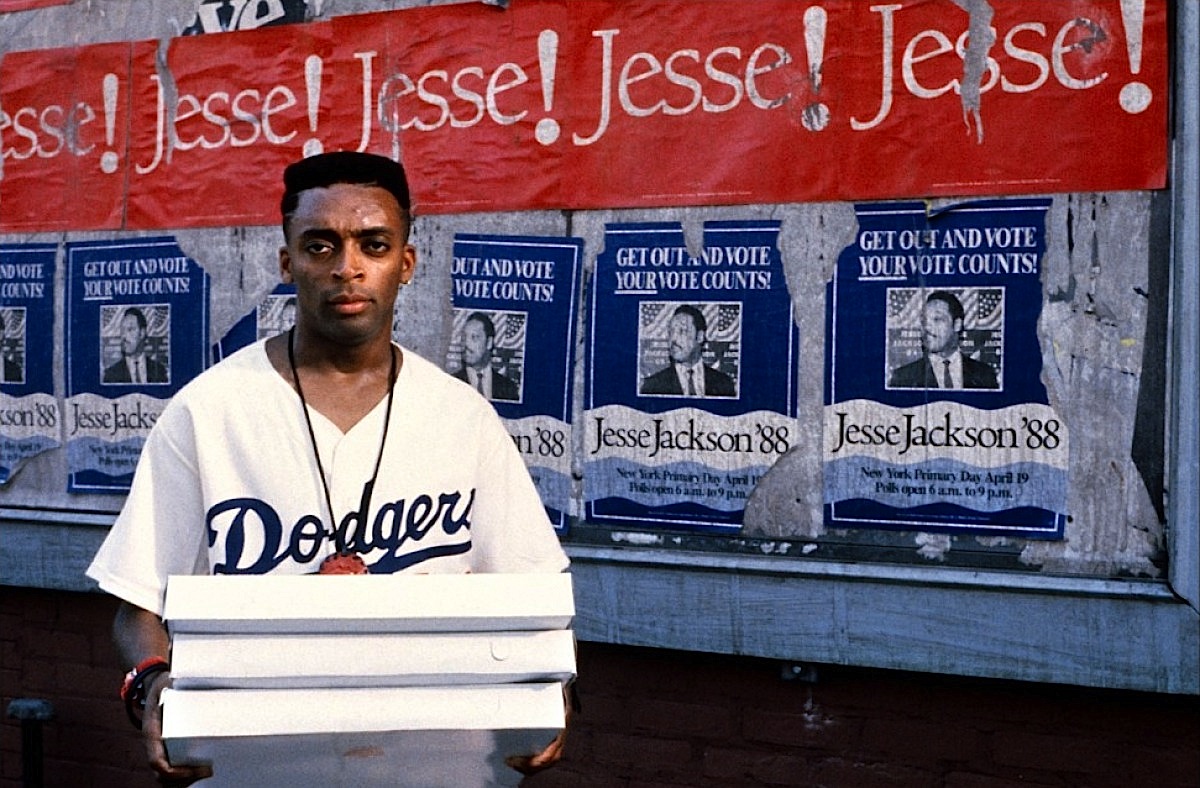
Spike Lee in "Do the Right Thing" (1989)
IN THIS ISSUE
JAMES BOND'S TASTES:
FOR YOUR EYES ONLY
By John Mariani
NEW YORK CORNER
MOLLUSCA
By John Mariani
ANOTHER VERMEER
CHAPTER 36
By John Mariani
NOTES FROM THE WINE CELLAR
VISITING BORDEAUX WINERIES
BY GEOFF KALISH
❖❖❖
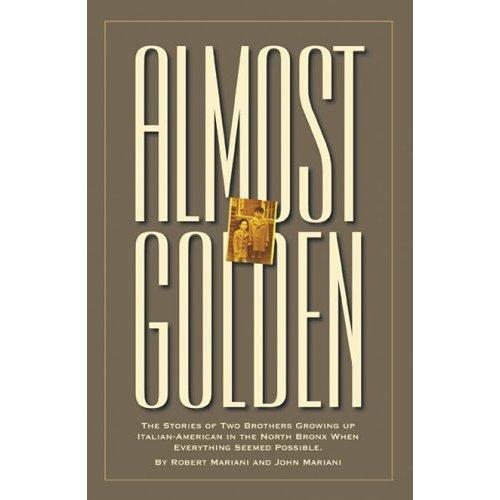

❖❖❖
JAMES BOND'S TASTES:
FOR YOUR EYES ONLY
By John Mariani
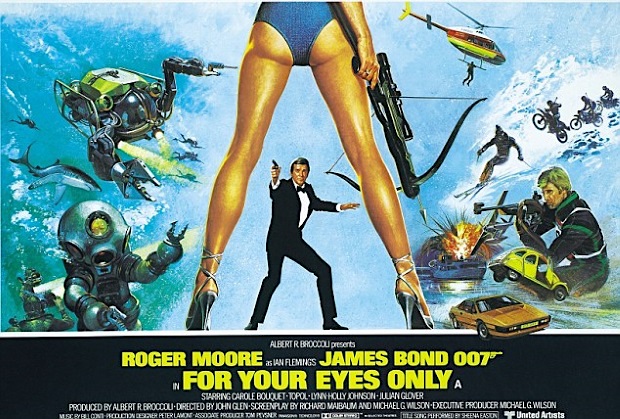
“For Your Eyes Only” was a short story by Ian Fleming, one
of five in a collection entitled From a
View to a Kill (1960), which was also the
name of one of the stories, along with “Quantum
of Silence,” “Risico” and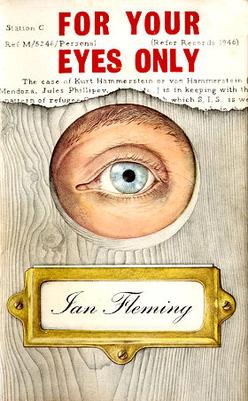 “The Hildebrand Rarity.” Except for the last,
the stories were intended for a TV series never
made, but film producer Cubby Broccoli had
bought the rights to most of Fleming’s Bond
works and turned both “For Your Eyes Only” and
“From a View to a Kill” into full-length movies.
“The Hildebrand Rarity.” Except for the last,
the stories were intended for a TV series never
made, but film producer Cubby Broccoli had
bought the rights to most of Fleming’s Bond
works and turned both “For Your Eyes Only” and
“From a View to a Kill” into full-length movies.
The story begins in Jamaica and involves
the murder of a British couple named the Havelocks
for their refusal to sell their estate to a former
Gestapo officer named von Hammerstein, now the
chief of counterintelligence for the Cuban secret
service. The killings are done by Cuban hit men on
orders from Major Gonzales, working for von 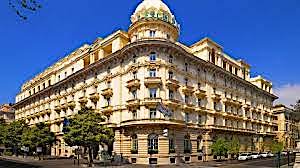 Hammerstein. The
killing of the Havelocks, who’d been good friends
with Bond’s superior, M, cause him to ask 007 to
act independently of MI6 to track down the
killers.
Hammerstein. The
killing of the Havelocks, who’d been good friends
with Bond’s superior, M, cause him to ask 007 to
act independently of MI6 to track down the
killers.
Bond
travels to Canada and Vermont to find von
Hammerstein at his estate on Echo Lake. Also in
the area is the Havelock’s daughter, an expert
with a bow and arrow, out to avenge her parents’
murder. She succeeds in killing von Hammerstein,
followed by a shoot-out between Bond and Gonzales
and the two Cuban henchmen, whom Bond kills. He
returns with the daughter to Canada.
Since no movies were made from “Risico” or
“The Hildebrand Rarity,” I obviously won’t do my
usual comparisons of them vs non-existent movies.
I will in passing mention that in “Risico” Bond is
in Rome, meeting his contact at the Hotel  Excelsior
(above) and dining at a restaurant called
Columba (fictitious) on melon and prosciutto and tagliatelle
verdi (below) with Genovese sauce.
Bond also goes to Venice, where he drinks at
Harry’s Bar and Caffé Florian on the Piazza San
Marco. In “The Hildebrand Rarity,” whose title
refers to a very rare fish (left) caught
off the Seychelles, he feasts on caviar, rosé
Champagne and the fish.
Excelsior
(above) and dining at a restaurant called
Columba (fictitious) on melon and prosciutto and tagliatelle
verdi (below) with Genovese sauce.
Bond also goes to Venice, where he drinks at
Harry’s Bar and Caffé Florian on the Piazza San
Marco. In “The Hildebrand Rarity,” whose title
refers to a very rare fish (left) caught
off the Seychelles, he feasts on caviar, rosé
Champagne and the fish. 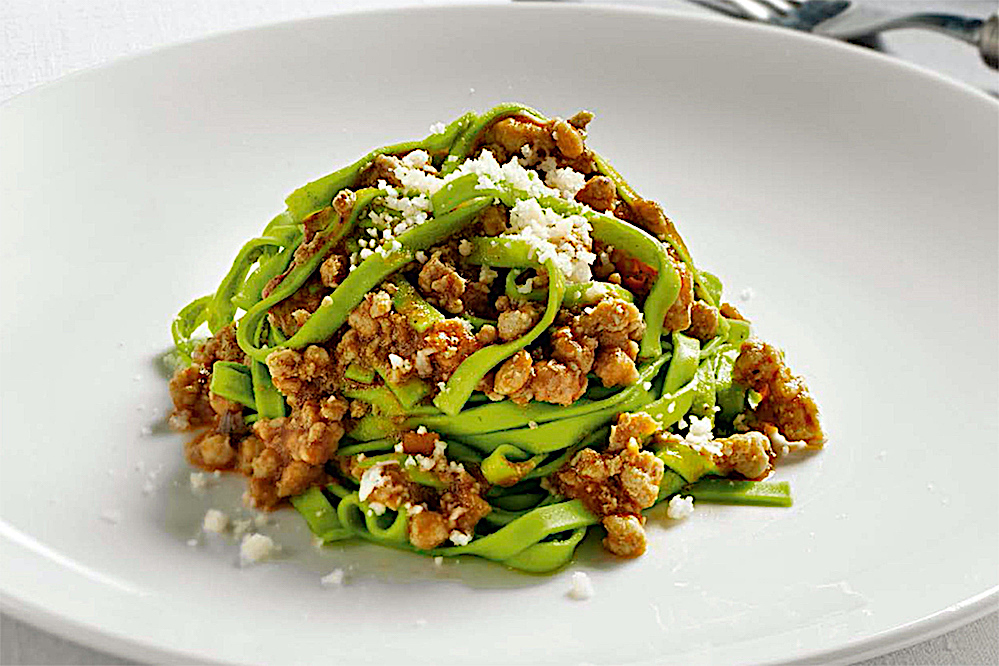
There is no gourmandism in the story “For
Your Eyes Only,” although Bond at one point
remarks, “The best things in America are
chipmunks, and oyster stew.”
The
movie For
Your Eyes Only (1981), with Roger
Moore, bears little resemblance to the short story
and none to its locations. Only the fact that the
heroine, the Havelocks’ daughter Melina
(played by French actress Carole Bouquet), is
skilled at archery is retained. It was the twelfth
Bond movie in the series, filmed in Greece, Italy
and the Bahamas.
A British spy ship, the St. Georges,
sinks in the Ionian Sea, and a marine
archaeologist, Sir Timothy Havelock, is asked by
MI6 to find it underwater, but he and his wife are
murdered by a Cuban hit man named Hector Gonzales.
Havelock’s daughter witnesses the murder and vows
revenge.
Bond is sent to retrieve a transmitter for
submarine ballistic missile launches and to find
out who hired Gonzales, whom Melina kills with her
bow and arrow. Bond finds out Gonzales’s enabler
is a billionaire named Emile Leopold Locque in the
Italian ski resort of Cortina, where 007 meets
wealthy Greek businessman and intelligence
informant Aris Kristatos, who informs Bond that
Locque is employed by Greek gangster Milos
Columbo, known as "the Dove." After out-skiing a
hit squad down a mountain, Bond flies to Corfu
after Columbo.
He meets Kristatos for dinner at the casino
as well as Columbo’s mistress, Countess Lisl von
Schlaf , whom Bond seduces. The next day they are
ambushed, Lisl is killed and Bond captured by
Columbo, who informs him that Locque was actually
hired by Kristatos, working for the KGB, to
retrieve the transmitter. Bond and Columbo raid
Kristatos's Albanian opium-processing warehouses,
where Bond finds naval mines like the one that sank the St Georges, then destroys the
base and takes out after Locque and kills him.
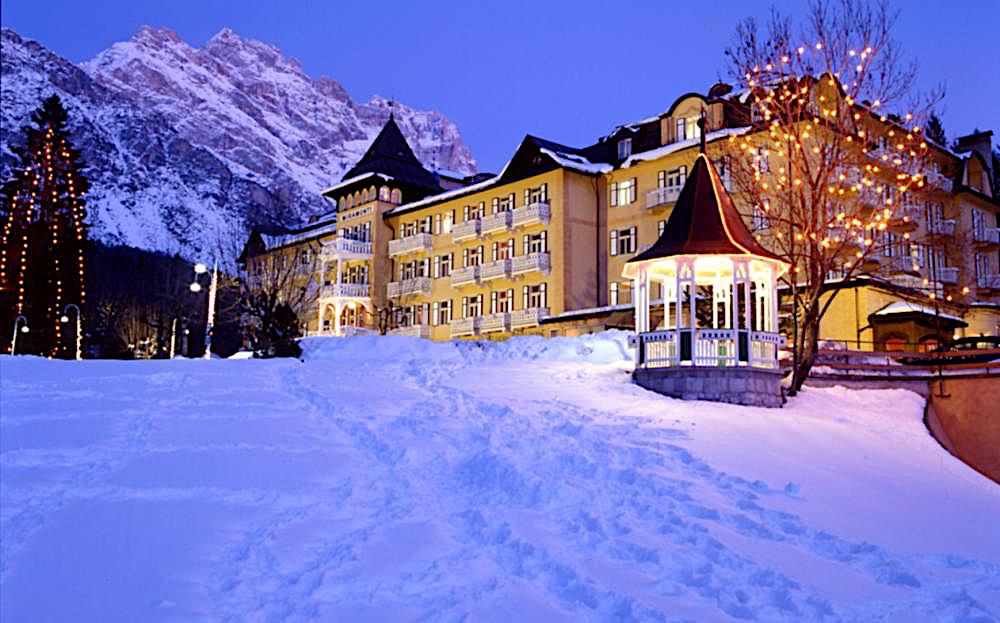 Bond meets Melina, and they recover the
transmitter from the sunken ship, but Kristatos
captures them and takes the device. Bond and
Melina escape and, with Columbo’s men, he attacks
a mountain monastery, St. Cyril’s, and gets back
the transmitter;
Columbo kills Kristatos with a knife. Bond
and Melina later spend the night aboard her
father's yacht.
Bond meets Melina, and they recover the
transmitter from the sunken ship, but Kristatos
captures them and takes the device. Bond and
Melina escape and, with Columbo’s men, he attacks
a mountain monastery, St. Cyril’s, and gets back
the transmitter;
Columbo kills Kristatos with a knife. Bond
and Melina later spend the night aboard her
father's yacht.
In Cortina d’Ampezzo Bond stays at the Miramonti
Majestic Grand Hotel (left), while
Melina is in the Cristallo.
Bond and Kristatos dine at the Casino
Achillon Palace, built in the 19th century,
where he orders “Preveza prawns,
Savara salad and Bourdetto.” Preveza is a city in
northwestern Greece; I have not been able to  find
anything called “savara,”
but it might be Bond’s error in thinking savara
means salad; Bourdetto (left) is a
seafood stew from Corfu made with scorpion fish
cooked with onions and red pepper. Kristatos says,
“Oh, an excellent choice, I'll have the same. May
I suggest a white Robola wine from Caponia, my
home place?” Bond responds (supposedly a line
added by Roger Moore), “Well, if you'll forgive
me, I find that a little too scented for my
palate. I prefer the Theotaki Aspero.”
find
anything called “savara,”
but it might be Bond’s error in thinking savara
means salad; Bourdetto (left) is a
seafood stew from Corfu made with scorpion fish
cooked with onions and red pepper. Kristatos says,
“Oh, an excellent choice, I'll have the same. May
I suggest a white Robola wine from Caponia, my
home place?” Bond responds (supposedly a line
added by Roger Moore), “Well, if you'll forgive
me, I find that a little too scented for my
palate. I prefer the Theotaki Aspero.”
Robola (in Italian Ribolla Giala) is a
Cephalonian wine that is deliberately left to
oxidize slight;y, which is what 007 means by
“scented.” His
preference is for a white wine from the Teotoky
vineyard, also on Corfu.
The only
other food references in the movie are to
characters eating pistachios.
❖❖❖
MOLLUSCA
212-970-1818
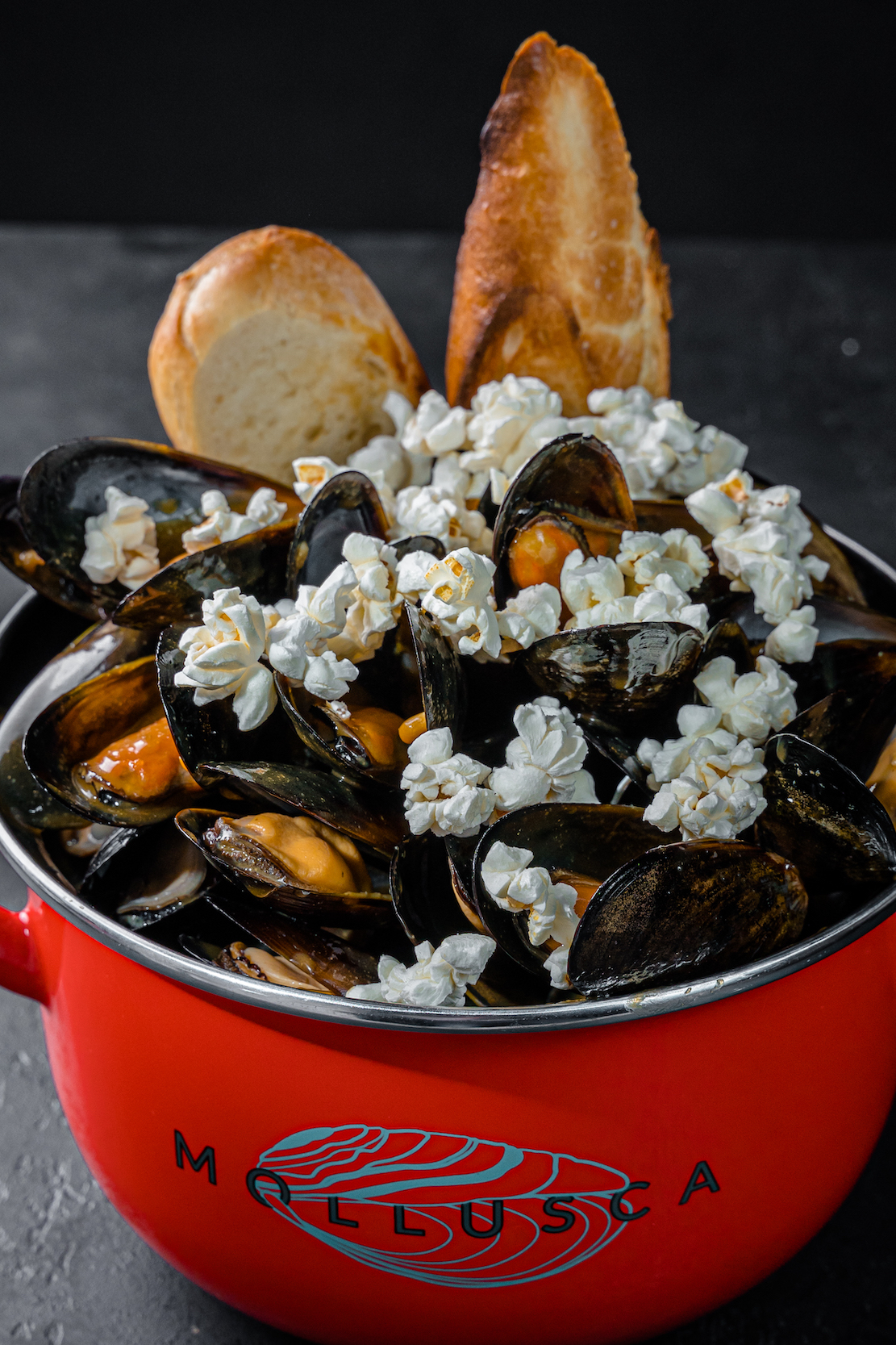
By John Mariani
Food photos by Evan Sung
I
was not happy when New
York’s so-called Meatpacking District gave way
to blocks of trendy boutiques and electric car
dealerships, but the success of the High Line as
a neighborhood restorative and the installation
of the Whitney Museum made it inevitable, and, I
must admit, the place looks a lot better than it
did when it was full of loud, grinding trucks
carrying carcasses day and night on streets
lined with effluent.
In
particular, the triangle that borders Greenwich
Avenue and Little West 12th Street is now a
charming, open space with red umbrellas, and at
least for the time being the air space and light
has not been compromised by 100-story skyscrapers.
Yet.
There at the edge of Little West 12th
Street is a new seafood restaurant named Mollusca,
whose signature dish of mussels is served with an
option of 35 sauces, from traditional white wine
to cacio e
pepe, condensed milk and wasabi, salted
caramel and peanut and popcorn. Chef
Gianmaria Sapia, from Savona, Italy, has joined
owner Eric Agababayev and his Alpina Restaurant
Group (which has six Molluscas in Moscow) in this
ambitious venture; the executive chef on premises
is Christian Bonilla, who comes from Zuma, the
snazzy seafood chain that Mollusca resembles in
size and menu departments.
But Mollusca’s menu is not just more
extensive but remarkable for the kitchen’s ability
to turn out so many disparate elements with such
finesse, from ceviches
to pastas, from lobster rolls to empanadas.
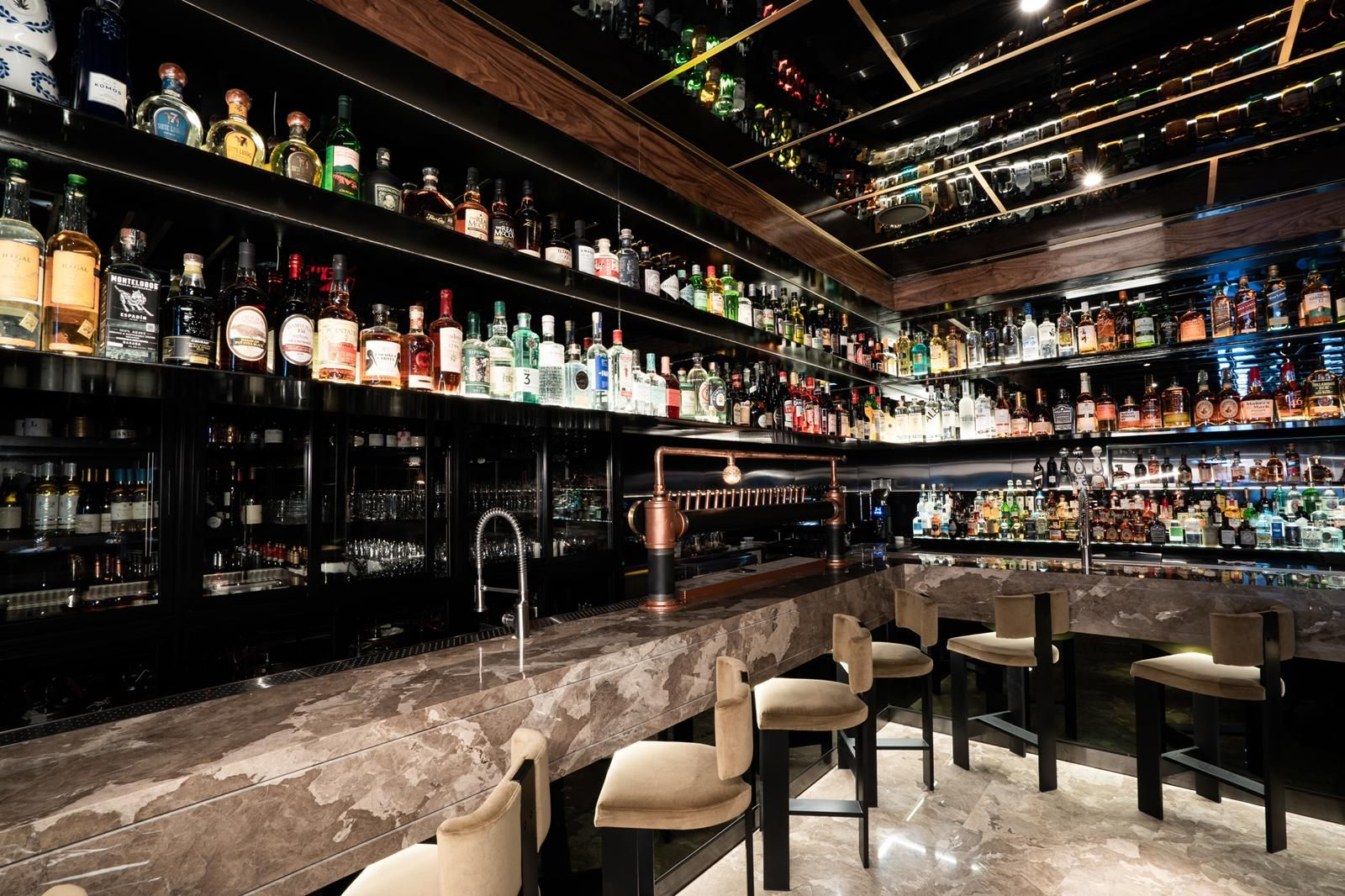
It’s a sleek and shadowy dining room,
especially at twilight, with a taupe marble
cocktail bar that seats only nine (indicating
Mollusca is not
seeking a Tao-like vibe). The 100-seat room is
nicely lighted with hand-blown glass chandeliers
resembling jellyfish, and the buttery soft leather
and velvet seating and tables are both well set
and well separated. I was there on a fairly slow
Tuesday night at summer’s end, so the noise level
was just fine, with music playing only faintly in
the background.
You’re going to need help perusing the vast
menu, so ask, and despite my tasting (with three
guests) of perhaps 20 dishes with no major flaws,
I can only wonder how the kitchen can keep up when
the place is packed.
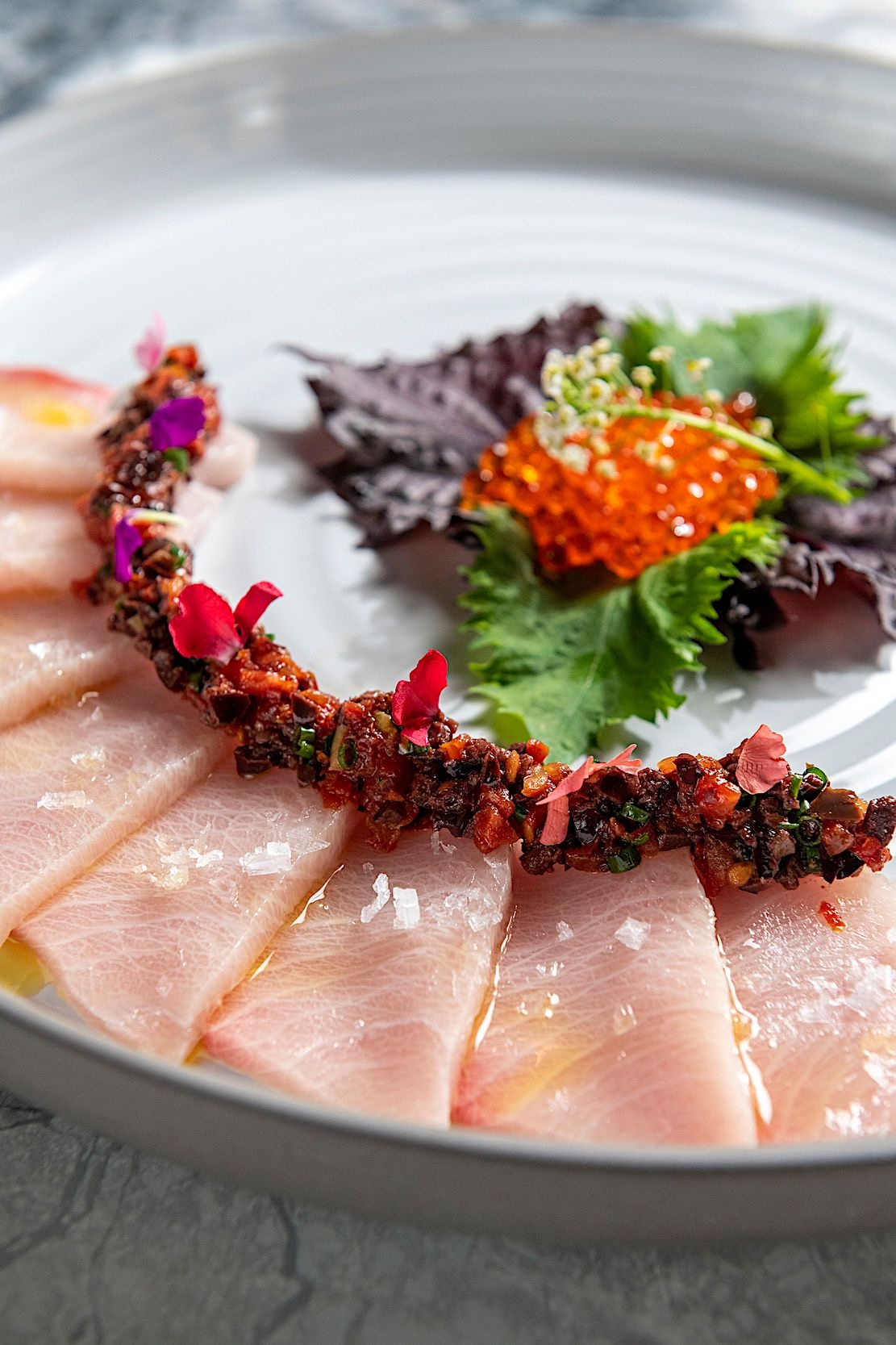 We
began with a hamachi ceviche with pickled
jalapeño, wasabi mayo and guacamole ($19) in a
pretty presentation that showed the East-West
direction the meal would take. So, too, branzino crudo
came with a yuzu
dressing with a hint of truffle and tri-color tobiko
eggs ($17). I’m not sure what’s so “classic” about
the “classic wagyu roll” ($34), but it was
definitely delicious and one of the better ideas
for using wagyu beef. A tataki
item of wagyu, uni, fresh truffle, ponzu aïoli and
gold leaves ($68) was overly elaborate for a dish
that hadn’t much flavor and the summer truffles
were as bland as summer truffles always are.
We
began with a hamachi ceviche with pickled
jalapeño, wasabi mayo and guacamole ($19) in a
pretty presentation that showed the East-West
direction the meal would take. So, too, branzino crudo
came with a yuzu
dressing with a hint of truffle and tri-color tobiko
eggs ($17). I’m not sure what’s so “classic” about
the “classic wagyu roll” ($34), but it was
definitely delicious and one of the better ideas
for using wagyu beef. A tataki
item of wagyu, uni, fresh truffle, ponzu aïoli and
gold leaves ($68) was overly elaborate for a dish
that hadn’t much flavor and the summer truffles
were as bland as summer truffles always are.
We did sample
mussels, of course, which range from $26-$48, and
come with a baguette and excellent French fries.
The Mollusca “signature oyster” (right) is
dressed with uni, a mignonette and a touch of
caviar ($12). Everybody these days seems to be
doing a tartare or two, and Mollusca’s double
version of tuna and salmon with caviar and nori
rice chips ($33) was a fine melding of flavors.
Among the many appetizers, we enjoyed the
four pieces of gyoza filled
with
crab and glazed with teriyaki
sauce and more truffle ($22), and there’s even an
authoritative rendering of crisp empanadas
with crab, shrimp and artisanal cheese lashed with
a spicy tomato sauce ($15).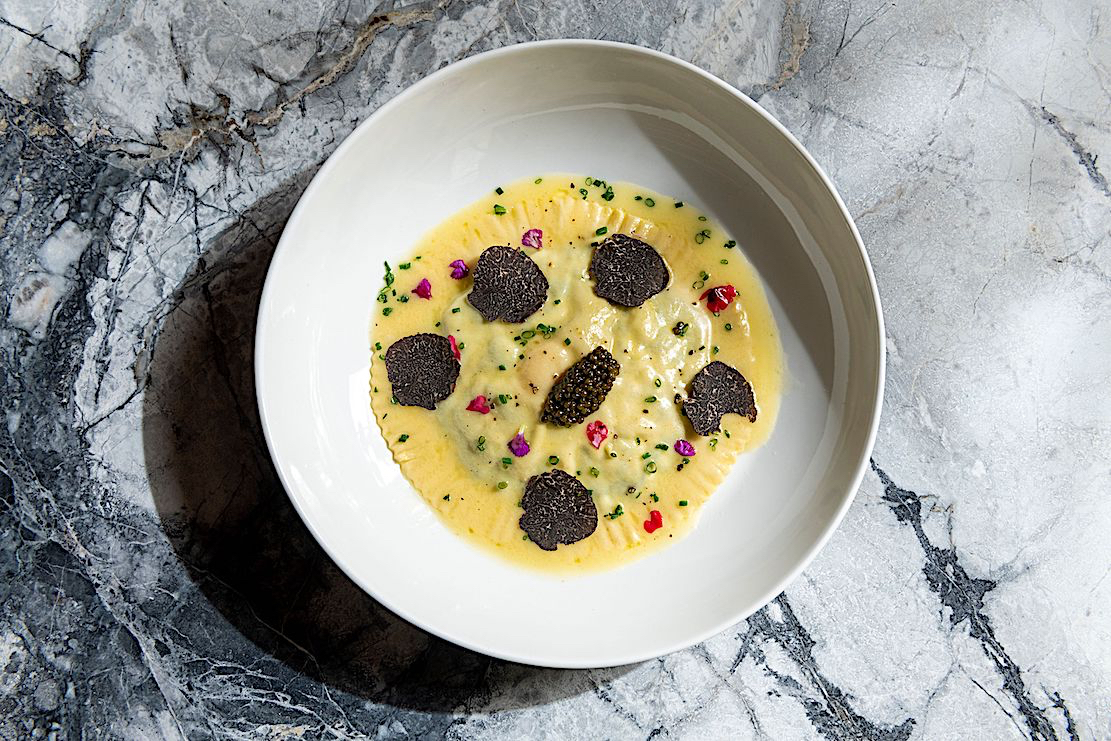
As you might expect by now, there is also a
pasta and rice section, and a variation on
spaghetti carbonara
(right) included teriyaki
tuna tartare, bonito flakes and a parmesan crisp
($26) that I had to admit had its singular charms. A
well-made risotto of shrimp, spinach, cream,
Parmesan fondue and black sesame seed ($31) was
sumptuous and could serve as a main course.
Given the prices up and down New England
these days for lobster rolls, I had to indulge in
Mollusca’s ($31), and it was simple and very good,
especially accompanied with those superior fries.
Octopus with a Greek salad and feta mousse and
leek puree ($36) was fine, if not much out of the
ordinary in New York, but cooking branzino in “acqua pazza”
(crazy water) with olive Taggiasca, pine nuts and
charred cherry tomatoes ($48) added just the right
elements to bring up the true flavors of the fish.
The desserts don’t hit the highest marks:
crème brûléé ($16) was soupy; profiteroles
($16) needed a better chocolate; and the tiramisù
($17), even if topped with gold foil, was, well,
another tiramisù.
Mollusca’s wine list has heft, and, as
things go, the bar offers a range of specialty
cocktails from shelves that contain just about any
liquor you can think of.
It’s
that attention to all-encompassing detail that
enhances the good looks and serious commitment of
the kitchen to first-rate ingredients done with a
subtlety that is surprising with such a long menu.
If Mollusca can pull it off as well as when I
dined there when the crowds arrive, it’s going to
be a very delectable tour de force.
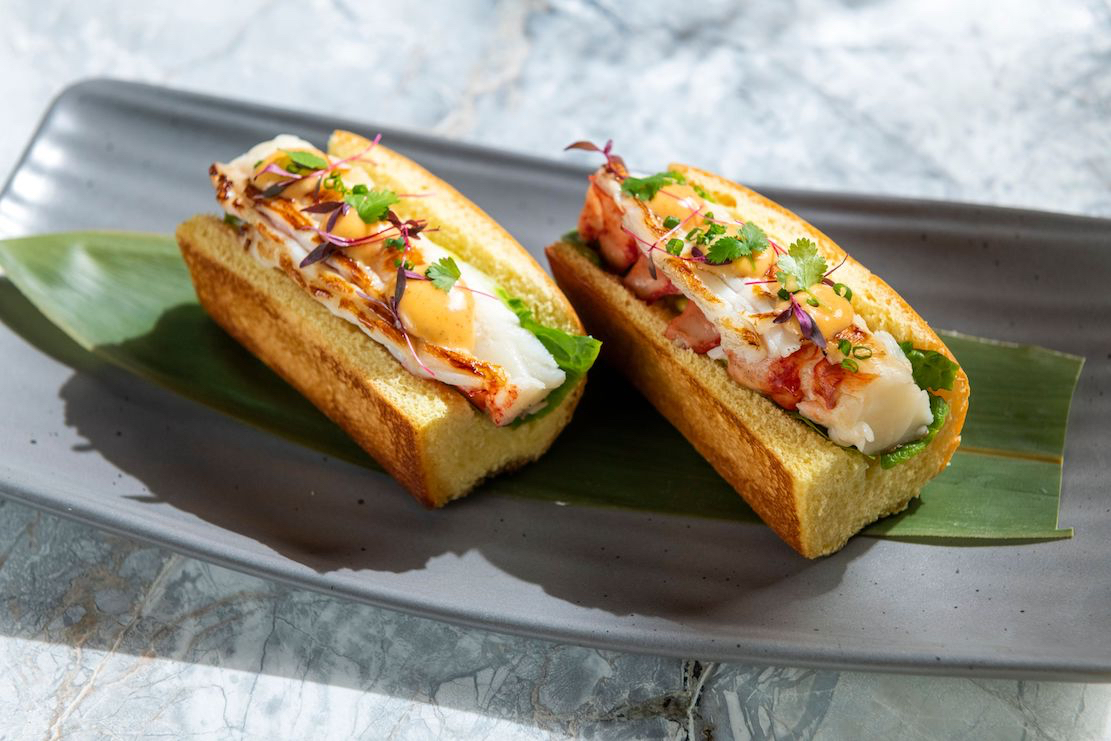
Open daily for
lunch and dinner.
ANOTHER VERMEER

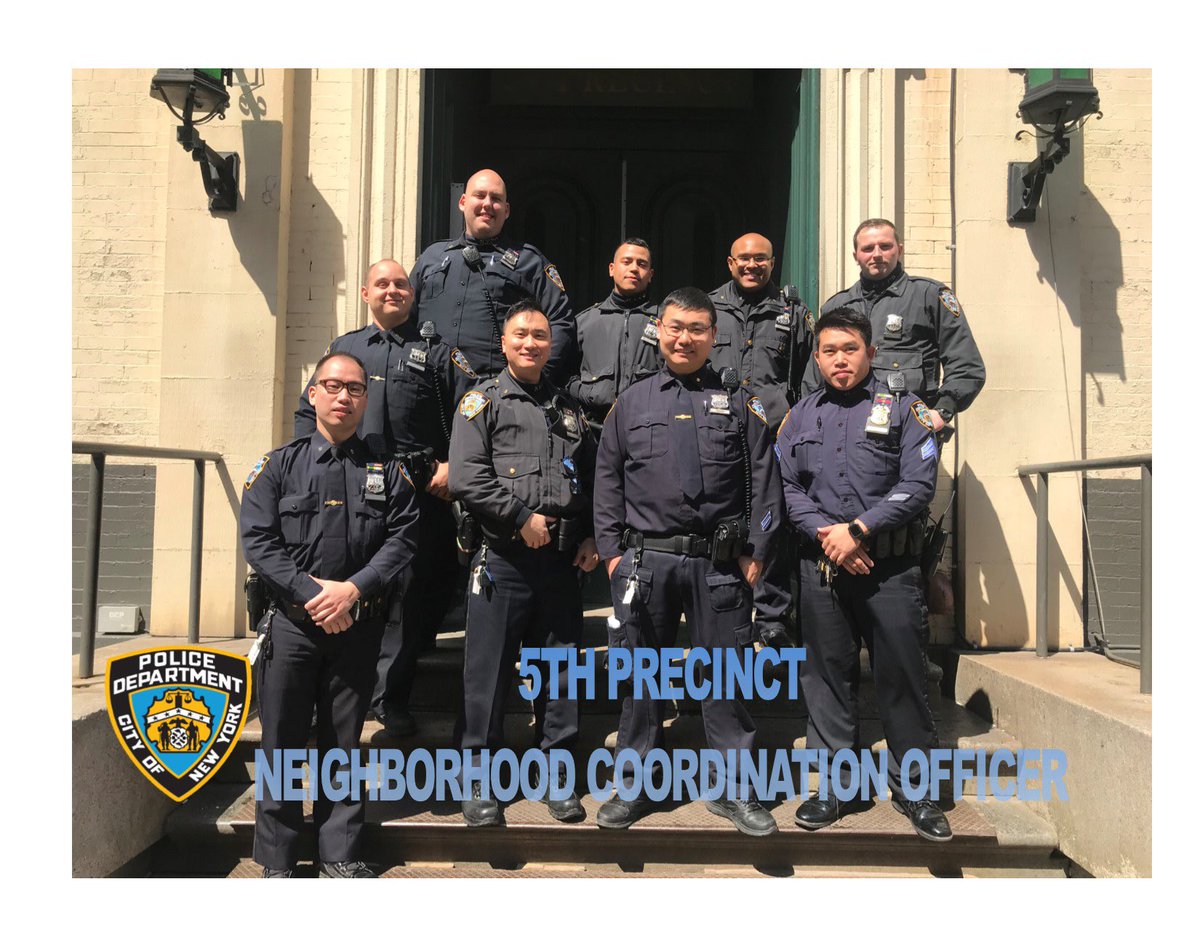 David called Bobby
Bao at the Chinatown precinct, the Fifth, and
asked if he wanted to have lunch or dinner in
the next day or two.
David called Bobby
Bao at the Chinatown precinct, the Fifth, and
asked if he wanted to have lunch or dinner in
the next day or two.
“Sure, as long as it’s uptown and you’re
paying,” said Bao.
“I’m paying. Where
do you want to go?”
"I’m feeling like
French food. You know Le Périgord, on East 50th near
the U.N.?”
David admitted he wasn’t familiar with
Manhattan’s high-end French restaurants but
said, fine, he’d see Bao at one o’clock the next
day.
Le Périgord was one of the last remaining
bastions of classic French cuisine in New York,
overseen for more than 30 years by an ebullient
Swiss owner named Georges Briguet (below),
who greeted Bao like an old friend and gave him
a fine window table.
“Monsieur
Bao, I know how much you like our Dover sole,”
said the restaurateur, “which just came swimming
through the door two hours ago.”
“Perfect,” said Bao, “and to start, the
artichoke vinaigrette. David, what are you in
the mood for?”
Fortunately, the menu was printed in both
French and English, so David was able to avoid
ordering escargots
or sweetbreads, in favor of the lobster bisque
and a filet mignon with black truffle sauce. 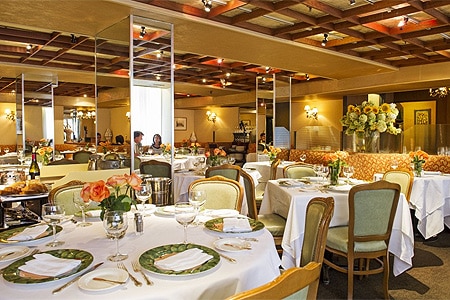
Georges Briguet (below)
leaned down towards Bao and said, “I hope, Monsieur
Bao, you are not on duty today. Will you be
having some wine?”
“Don’t tell anyone, Georges,” Bao
answered, “but I’m working undercover today for
the Health Department, inspecting French
restaurants in New York. I must see how you’re
maintaining your wine cellar.”
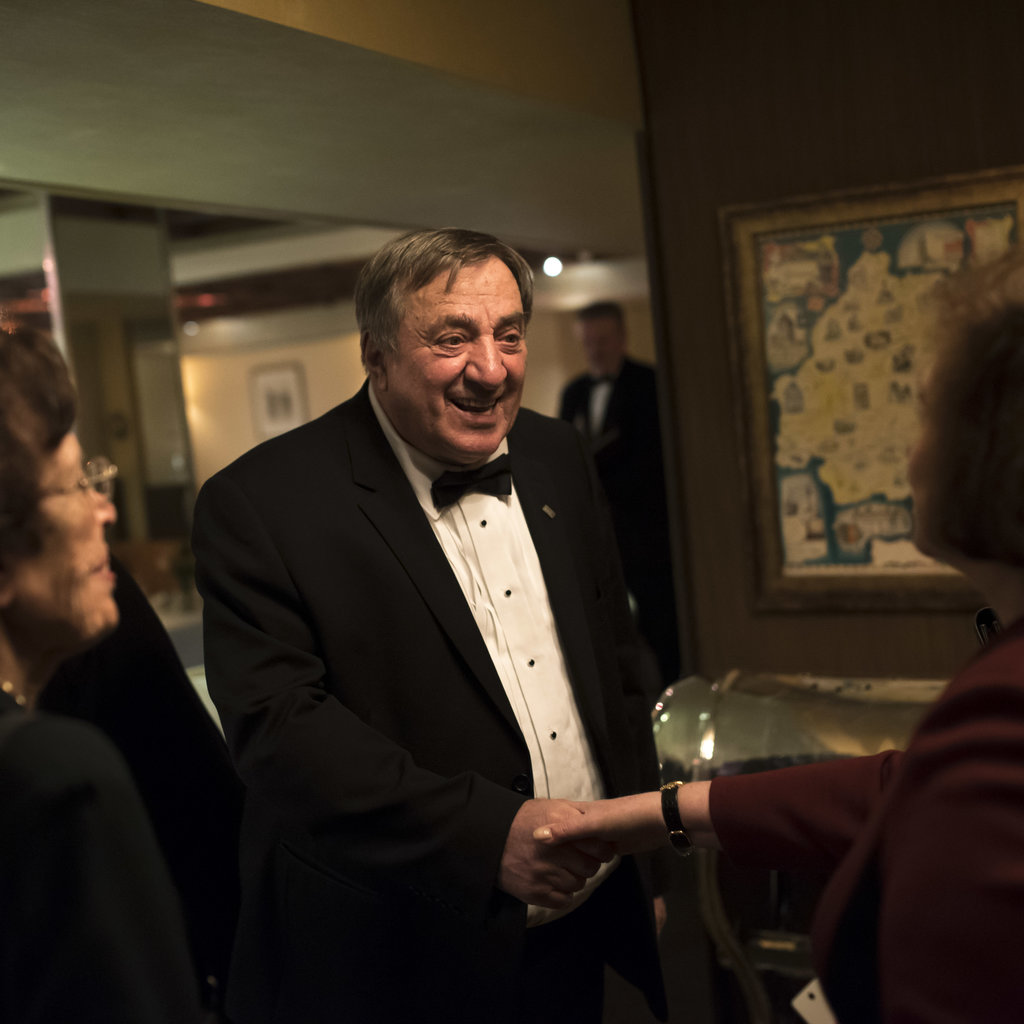 “Ah, then I shall choose the wine, just
to make sure I am not breaking any laws.” Within
moments he came back with a bottle of white
Burgundy and a half-bottle of Bordeaux. Bao
nodded his approval. David wondered what this
was all going to cost.
“Ah, then I shall choose the wine, just
to make sure I am not breaking any laws.” Within
moments he came back with a bottle of white
Burgundy and a half-bottle of Bordeaux. Bao
nodded his approval. David wondered what this
was all going to cost.
As they nibbled on the baguette and
butter with the Burgundy, the two old friends
caught up with each other, David withstanding
the usual jibes for his leaving the force. After
the Chinatown indictments, Bao had to leave
undercover work but had been promoted to an NYPD position
where
he coordinated with Asian mob investigators
elsewhere, including Taiwan, which he’d visited
several times, consulting with Taiwan’s National
Police Agency.
David filled him in on the Vermeer
project, which Bao said sounded a bit out of his
friend’s line after the Capone case.
“Hey,” said David, “I go wherever Katie
Cavuto wants me to go.”
“That good looking, huh?”
“You could say that. So, anyway, this guy
Hai Shui we’re going to see. Do you
know anything about him that will help with our
interview.”
“He’s the petro-chemicals billionaire,
right? I can’t say I know a lot about him, but
I’m pretty sure he’s connected with Black Gold,
which is what they call corruption between
gangsters and pols over there. I mean anyone who
is
anyone in Taiwan is. The politicians get in bed
with the mobs because they can really help bring
in the votes, because the gangsters always make
sure they have a good, even generous
relationship with the local people. Sometimes
the politicians are
mobsters.”
In fact, just two years before, a former
gangster turned Speaker of Parliament was shot
at point blank range over a gambling dispute.
“You haven’t seen anything till you watch a
funeral procession for a dead mobster,” said
Bao. “Thousands of people show up, weeping,
throwing flowers. Oh, and the mobs also control
the funeral parlor industry on the island.”
“What are the main mobs in Taipei?”
“Four, basically: the Bamboo
Union—they’re the most powerful—the Four Seas
Gang, the Celestial Path (below) and the
Songlian Gang (right).”
“They sound like Chinese tea companies.”
Bao let that go. “Bamboo Union is most
involved with construction and has international
tentacles, so if Shui is
involved, it’s most likely with Bamboo, which
has about 10,000 members. And, by the way,
they’re known for silencing journalists that get
too close to them.”
“That go for American journalists?” asked
David, trying to sound nonchalant.
“Well, I heard they murdered a
Chinese-American journalist in San Francisco
back in the ‘80s. Shot him in his garage. So be
careful over there.”
“And how connected are they with gangs
internationally?”
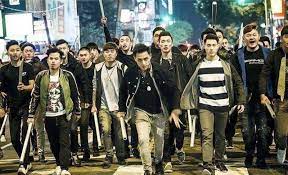 “More
and more,” said Bao, sipping his wine. “They’ve
had contact with the Japanese yakuza,
maybe even with North Korea—and, man, that is
dangerous—and of course in North America. That’s
what I work on mostly.”
“More
and more,” said Bao, sipping his wine. “They’ve
had contact with the Japanese yakuza,
maybe even with North Korea—and, man, that is
dangerous—and of course in North America. That’s
what I work on mostly.”
Georges Briguet returned after the main
courses were finished and made suggestions for
dessert, then insisted he prepare a sampling of
several, which included chocolate mousse, pear
tart and almond cake.
David
asked for the check and was surprised it was not
nearly as much as he’d expected.
“I think your friend sliced a little off
the bill,” he said.
“Maybe he comped us for the coffee,” said
Bao, smiling.
David told Bao how good it was to catch
up with him, how much he enjoyed the meal, and
thanked him for the information.
“Be a little bit careful,” said Bao. “You
don’t want anything to happen to that pretty
girl you’re with.”
“That I promise, Bao.”
“By the way, I hope you’re not planning
to bring your gun to Taiwan. They
find out you’re packing and they’ll toss your
ass in a real dark cell.”
“Won’t happen. I had to surrender my
service piece back when I retired.”
“Hm, knowing you’ve probably still got a
few enemies left, I’d have thought you might
have bought one since. Maybe a nice little
chrome-plated Beretta?”
“I don’t want anything to do with guns,”
said David, “though I could have used one in the
Capone case.”
“I read about that. Nice going.”
The two men parted with pats on the back,
Bao hailed a cab and David drove home, wondering
what to pack for Taiwan.
© John Mariani, 2016
❖❖❖
BY GEOFF KALISH
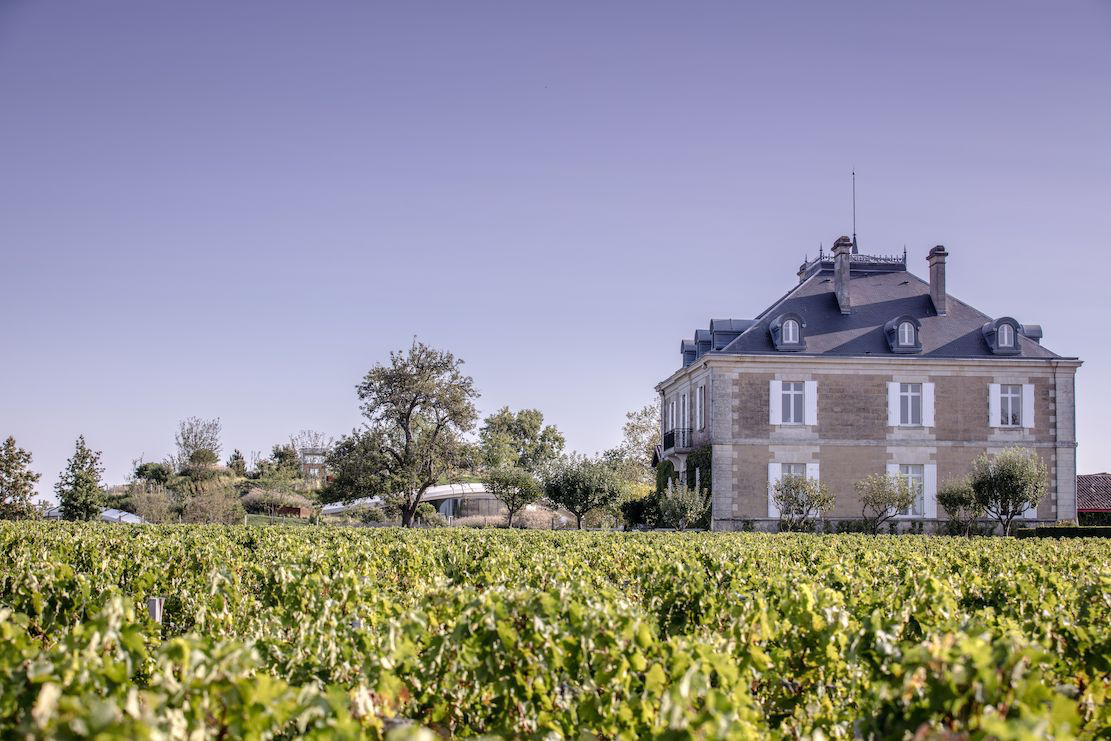
Château de Sales
On
a recent trip to France, we visited four
wineries in Bordeaux that varied widely in
size and wine-making processes, but all
focusing on the quality rather than the
quantity of wine produced. Of
note, all of the wines discussed are available
in the United States.
Château
de Sales
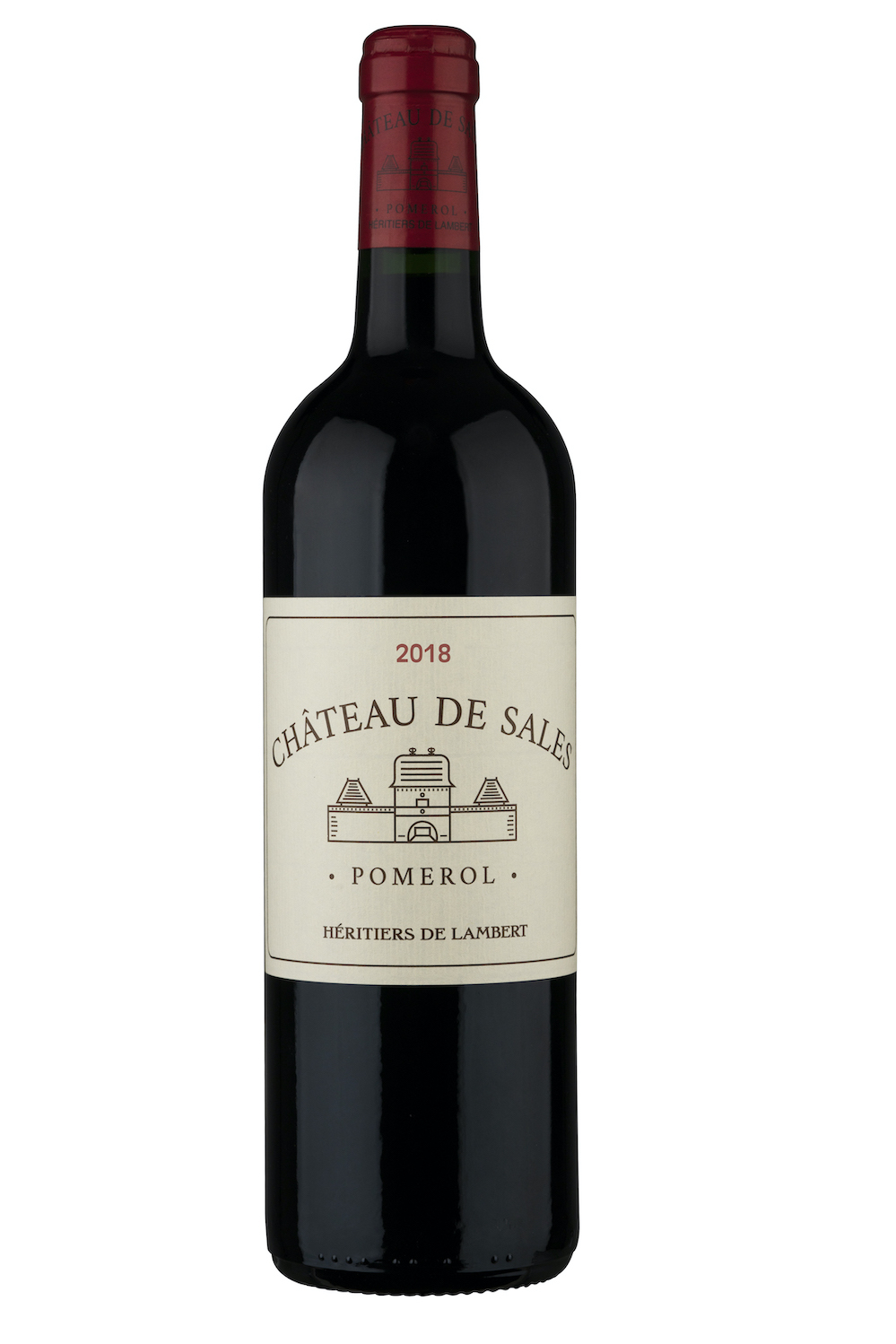 Even
though it comprises the largest estate in
Pomerol (220 acres), Château de Sales, since
2017 under the direction of Vincent Montiguaud
(former winemaker for the Rothschild property
Domaine de Baronarques), only produces about
10,000 cases of wine a year. The property is
comprised mainly of gravel and sand-laden
vineyards planted with 73% Merlot, 15% Cabernet
Sauvignon and 12% Cabernet Franc. Following hand
harvesting, the grapes are de-stemmed and, as
separate lots, lightly crushed and fermented in
temperature-controlled tanks over about three
weeks. Next, the individual lots are aged in oak
barrels for about 12 months before blending and
bottling.
Even
though it comprises the largest estate in
Pomerol (220 acres), Château de Sales, since
2017 under the direction of Vincent Montiguaud
(former winemaker for the Rothschild property
Domaine de Baronarques), only produces about
10,000 cases of wine a year. The property is
comprised mainly of gravel and sand-laden
vineyards planted with 73% Merlot, 15% Cabernet
Sauvignon and 12% Cabernet Franc. Following hand
harvesting, the grapes are de-stemmed and, as
separate lots, lightly crushed and fermented in
temperature-controlled tanks over about three
weeks. Next, the individual lots are aged in oak
barrels for about 12 months before blending and
bottling.
The 2018 ($34) showed a ruby red color
and bouquet and tasted of cassis and ripe
raspberries with notes of exotic spices in its
smooth finish. The 2020 ($26) had a complex
bouquet and taste of cherries, blackberries and
cassis with hints of orange zest in its slightly
tannic finish. Both wines mated particularly
well with beef carpaccio as well as tenderloin
of veal.
Château
Haut
Bailly
Created in t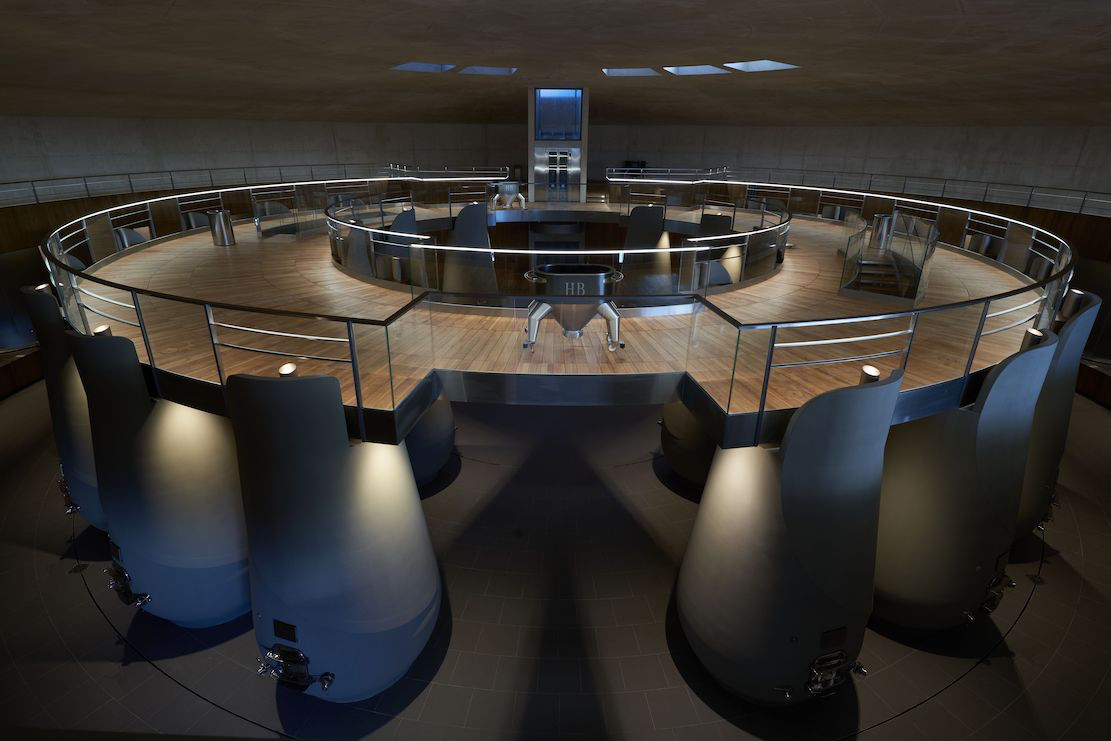 he 16th century,
this property, located on the so-called left
bank of the Gironde River in the eastern
Pessac-Léognan
region
of Bordeaux, has a somewhat checkered history.
Its vineyards (now planted to 65% Cabernet
Sauvignon, 25% Merlot and 10% Cabernet Franc)
were devastated by phylloxera at the end of the
19th century because of the then owner’s refusal
to graft vines on resistant rootstock, followed
by a few years of experimenting in the 1920s
with the
controversial process of pasteurization of the
wine just before bottling.
he 16th century,
this property, located on the so-called left
bank of the Gironde River in the eastern
Pessac-Léognan
region
of Bordeaux, has a somewhat checkered history.
Its vineyards (now planted to 65% Cabernet
Sauvignon, 25% Merlot and 10% Cabernet Franc)
were devastated by phylloxera at the end of the
19th century because of the then owner’s refusal
to graft vines on resistant rootstock, followed
by a few years of experimenting in the 1920s
with the
controversial process of pasteurization of the
wine just before bottling.
However, current owners of the estate
(the family of M&T bank founder Robert
Wilmers) have totally modernized the winery and
its winemaking practices under General Manager
Véronique Sanders and technical manager Gabriel
Vialard. In fact, the winery is now so up to
date that visiting it is akin to a stop at NASA
control facilities at Cape Canaveral—with a
circular glass and steel structure housing
futuristic-looking cement fermentation tanks,
gravity flow wine transfer and ultra-modern
areas for aging and bottling.
Production is now up to over 12,000 cases
annually, divided between 60% of its first-line
Château Haut-Bailly and the remainer for its
“second and third” wines, La Parade de
Haut-Bailly and Pessac-Léognan
by
Château Haut-Bailly. Made with hand harvested
grapes, vinified by individual plots with aging
in 50% new French oak for 16 months, the 2015
Château Haut-Bailly ($135) showed a fragrant
bouquet and concentrated taste of ripe plums and
cassis, with notes of pears and exotic fruit in
its soft finish, perfect to match grilled steak
and roasts.
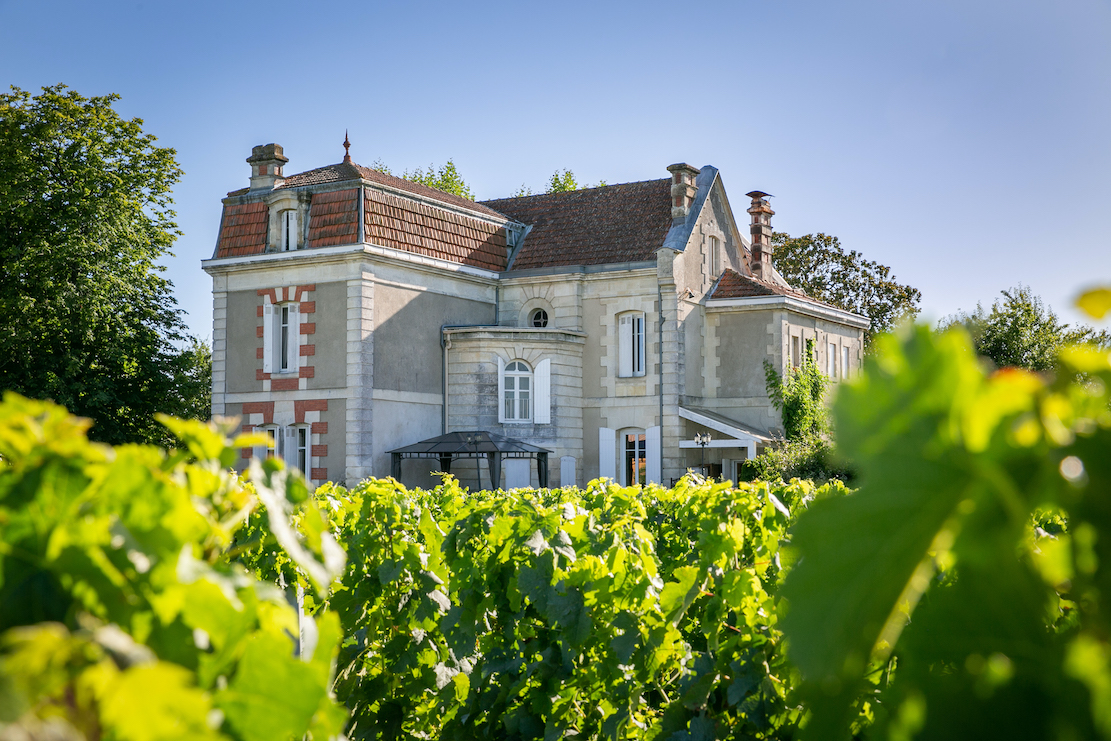 Château
Cantenac
Château
Cantenac
Founded in 1870 and since 1937 owned by
the family of its current proprietor, Nicole
Roskam-Brunot. Often confused with the Margaux
property Chateau Cantenac Brown, this 47-acre
estate is situated about two miles west of the
village of Saint Émilion and planted with 75%
Merlot, 24% Cabernet Franc and 1 % Cabernet
Sauvignon grapes.
In addition to producing top quality
wine, this facility serves as a teaching site
for interns from UC Davis. In fact, three of its
female interns ended up marrying the sons of the
owner, with two still involved in winery
operations; Adrienne Roskam, one of those former
interns, took us on our tour of the winery.
About 4,000 cases a year of the main wine
(Château Cantenac), fermented in
temperature-controlled cement tanks and aged for
18 months following fermentation, are produced
annually, with smaller amounts of Château
Cantenac (Séléction de Madame), Château Cantenac
(Climat), Moulin de Grénet and Château Lauzette
Déclerq also produced. The 2020 Château Cantenac
($25) showed a bouquet and taste of ripe plums
and cherries with notes of pears and apricots in
its finish, perfect to mate with grilled duck
breasts or roast leg of lamb.
Clos
des
Jacobins
Located less than a five-minute car ride
from the town of Saint Émilion, this small
winery annually produces about 2,500 cases of
the Grand Cru Classe “Clos des Jacobins,” which
we first became acquainted with the night before
our visit at nearby L’Atélier de Candale
Restaurant (owned by Magali and Thibault
Candale). Taking its name from the Benedictine
monks baptized as Jacobins (for Saint Jacques),
the 21-acre vineyard, primarily surrounding the
winery, and a second smaller plot near Château
Angélus, date back to the 1700s and are planted
to about 80% Merlot, 18% Cabernet Franc and 2%
Cabernet Sauvignon.
The idea is to make small amounts of top-class wine that’s easy to enjoy with food, explained the son of winemaker Maxime Masset. Following harvest, the grapes undergo maceration, after which fermentation is conducted in French oak tanks with aging in French oak barrels (about 75% new) for 18 months. The 2010 showed a bouquet and taste of ripe cherries and plums with soft tannins and hint of vanilla in its memorable finish. No less wonderful, the 2016 ($35) had a bouquet and taste of raspberries and cassis with notes of wild strawberries and of brioche in its finish.

❖❖❖

ARTICLES WE NEVER FINISHED
READING
"Finally, I Can Fulfill My Fantasy of Licking a Dive Bar Wall (Said No One Ever)" by Bettina Makalintel, Eater.com (8/15/22)
The Encyclopedia of American Food and Drink by John F. Mariani (Bloomsbury USA, $35) Modesty forbids me to praise my own new book, but let me proudly say that it is an extensive revision of the 4th edition that appeared more than a decade ago, before locavores, molecular cuisine, modernist cuisine, the Food Network and so much more, now included. Word origins have been completely updated, as have per capita consumption and production stats. Most important, for the first time since publication in the 1980s, the book includes more than 100 biographies of Americans who have changed the way we cook, eat and drink -- from Fannie Farmer and Julia Child to Robert Mondavi and Thomas Keller. "This book is amazing! It has entries for everything from `abalone' to `zwieback,' plus more than 500 recipes for classic American dishes and drinks."--Devra First, The Boston Globe. "Much needed in any kitchen library."--Bon Appetit. |
"Eating Italian will never be the same after reading John Mariani's entertaining and savory gastronomical history of the cuisine of Italy and how it won over appetites worldwide. . . . This book is such a tasteful narrative that it will literally make you hungry for Italian food and arouse your appetite for gastronomical history."--Don Oldenburg, USA Today. "Italian
restaurants--some good, some glitzy--far
outnumber their French rivals. Many of
these establishments are zestfully described
in How Italian Food Conquered the World, an
entertaining and fact-filled chronicle by
food-and-wine correspondent John F.
Mariani."--Aram Bakshian Jr., Wall Street
Journal.
"Equal parts
history, sociology, gastronomy, and just
plain fun, How Italian Food Conquered the
World tells the captivating and delicious
story of the (let's face it) everybody's
favorite cuisine with clarity, verve and
more than one surprise."--Colman Andrews,
editorial director of The Daily
Meal.com. "A fantastic and fascinating
read, covering everything from the influence
of Venice's spice trade to the impact of
Italian immigrants in America and the
evolution of alta cucina. This book will
serve as a terrific resource to anyone
interested in the real story of Italian
food."--Mary Ann Esposito, host of PBS-TV's
Ciao
Italia. "John Mariani has written the
definitive history of how Italians won their
way into our hearts, minds, and
stomachs. It's a story of pleasure over
pomp and taste over technique."--Danny Meyer,
owner of NYC restaurants Union Square
Cafe, The Modern, and Maialino.
|
 Everett Potter's Travel Report:
Everett Potter's Travel Report: 
Eating Las Vegas
MARIANI'S VIRTUAL GOURMET
NEWSLETTER is published weekly. Publisher: John Mariani. Editor: Walter Bagley. Contributing Writers: Christopher
Mariani, Misha Mariani, John A. Curtas, Gerry Dawes, Geoff Kalish.
Contributing
Photographer: Galina Dargery. Technical
Advisor: Gerry
McLoughlin.
If you wish to subscribe to this
newsletter, please click here: http://www.johnmariani.com/subscribe/index.html
© copyright John Mariani 2022